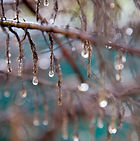Freshwater
Aquatic

Rivers and Streams


Ponds and Lakes

Ponds and lakes support most algae and other plant life, lakes being the most consistent and stable environment out of the two for supporting life. They contain stagnant water--water that is not in motion. The primary separation between the two is their size. Lakes are often considered to be larger, while ponds are small and more local. When thinking of going freshwater fishing or boating, you're talking about going out on a lake, not a pond. Plant and animal life is generally located in the shallowest portions of the water. The shallows have the most light, and therefore the most heat.
Rivers and streams are often considered to be similar in the sense that they both have running water that flows in one direction, and both have a start and end point. Generally, rivers and streams begin from large amounts of water, like lakes. Many people separate the two based on size; rivers are considered to be large and long, while streams tend to be smaller in both width and length. Life in rivers and streams is mostly contained to the beginning and middle. This is largely because of the clear water and sediments in the water towards the mouth of the river or stream.
Wetlands are considered to be areas of stagnant water, such as in bogs, swamps, and marshes. Wetlands contain the most diverse array of animal life provided by any subsection of the freshwater biome. Not all wetlands are a part of the freshwater biome because of their salt content and different ecosystem.
Some 10% of the land on Earth is covered by glacial ice, including glacials, ice caps, and ice sheets in Greenland and Antarctica. 75% of the world's fresh water is stored in glacial ice. As can be expected, there is no plant and animal life inside of the glaciers, but in the biosphere, there is assorted life. Though they are commonly seen as immobile, glaciers are actually frozen rivers, and move very slowly down mountains to the sea.

Wetlands


Glaciers

The Five Pillars of the Freshwater Biome
The freshwater aquatic biome is split into five main subsections: ponds, lakes, river, streams, and wetlands. Each subsection shares similar qualities, making them all part of the freshwater biome, but have distinct traits that separate them from each other. This biome is spread out across the world on every continent, even in Antarctica's glaciers!